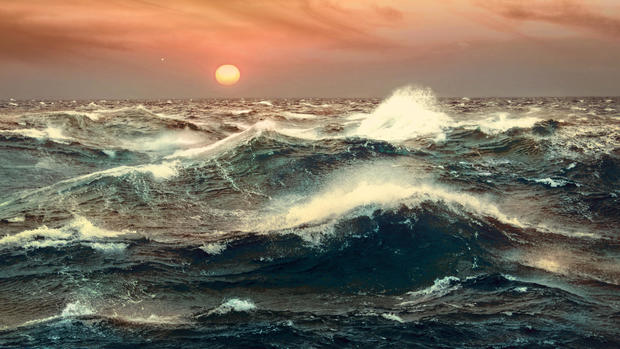Scientists announced this week the discovery of a nearby “super-Earth” that could potentially support life, calling it a “water world.”
The team, led by the University of Montreal, used observations from NASA’s Transiting Exoplanet Survey Satellite (TESS), as well as telescopes on the ground, to detect the exoplanet, which is described as potentially rocky like Earth, but larger. Named TOI-1452 b, it orbits a red dwarf star about 100 light years away from our planet, which scientists say is “fairly close.”
Scientists have long theorized the possibility of other ocean planets, but they have been difficult to confirm. TOI-1452 b is roughly 70% larger than Earth and about five times as massive, which would be consistent with having a very deep ocean — but more research is still needed.
NASA says the planet could also potentially be an enormous rock with little or no atmosphere — or even a rocky planet with an atmosphere made up of hydrogen or helium.
Benoît Gougeon, Université de Montréal
A year on TOI-1452 b takes just 11 days, but it gets a similar amount of light from its smaller, cooler star as Venus does from the sun. Despite its close orbit, it’s located in the “habitable zone,” meaning it could have highly-coveted liquid water on its surface.
If this “one-of-a-kind” exoplanet were confirmed to be a water world, its ocean would be significantly deeper than Earth’s. While our planet is 70% water, oceans account for less than 1% of the planet’s mass — whereas water on TOI-1452 b could make up as much as 30% of its mass, according to one simulation.
“TOI-1452 b is one of the best candidates for an ocean planet that we have found to date,” said study lead Charles Cadieux. “Its radius and mass suggest a much lower density than what one would expect for a planet that is basically made up of metal and rock, like Earth.”
If that simulation is accurate, it would make the planet comparable to watery moons in our solar system, like Jupiter’s Ganymede and Callisto, which scientists believe hide deep oceans under their surfaces.
Benoit Gougeon, Université de Montréal.
The James Webb Space Telescope is on a mission to understand the origins of our universe, but researchers say it could take some time on the side to observe TOI-1452 b, which, “in a stroke of good fortune,” appears in the constellation Draco, a part of the sky that Webb can see during most times of the year.
“Our observations with the Webb Telescope will be essential to better understanding TOI-1452 b,” said researcher René Doyon, who also works with one of the four science instruments of the James Webb Space Telescope. “As soon as we can, we will book time on the Webb to observe this strange and wonderful world.”






